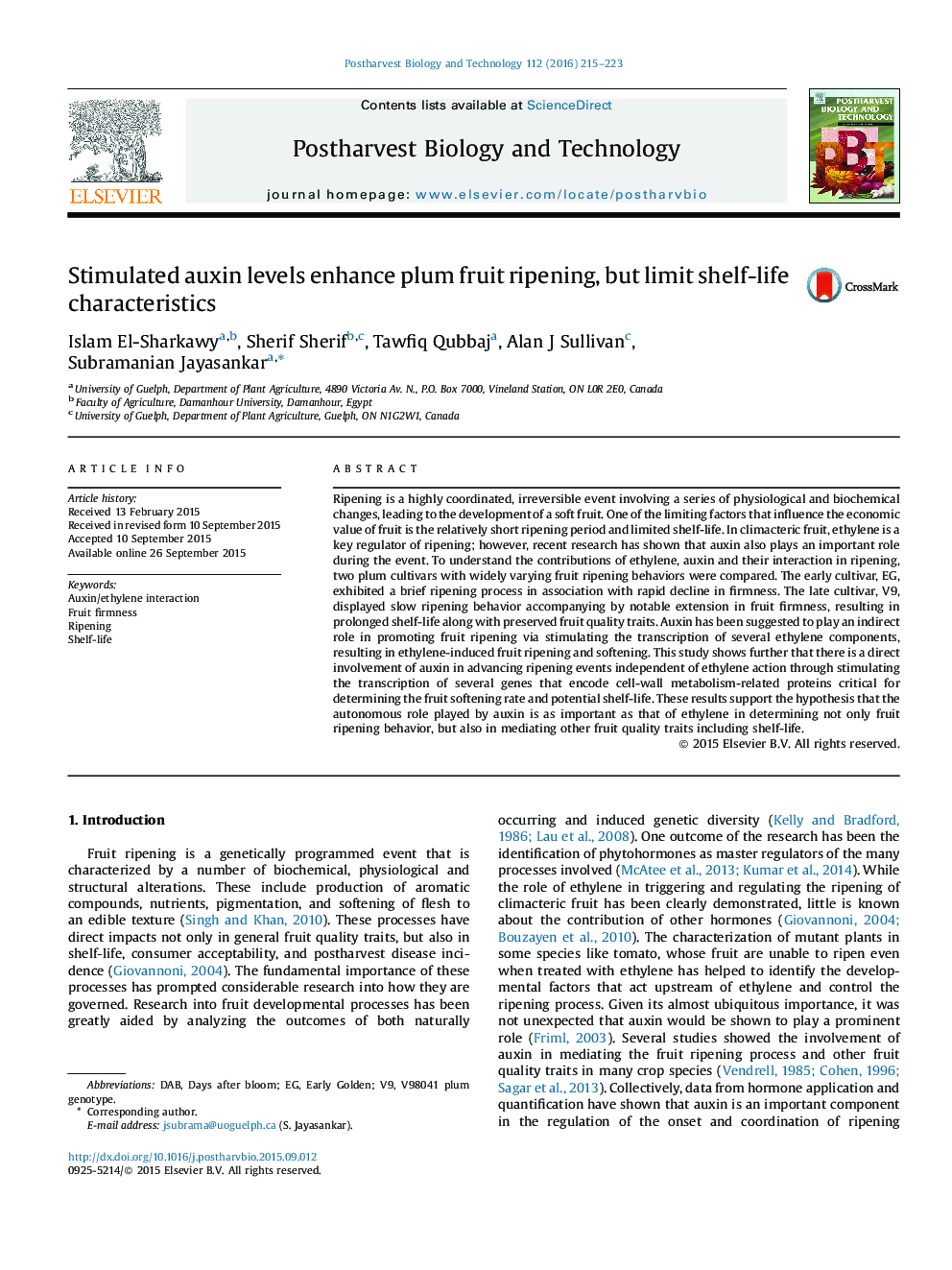| Article ID | Journal | Published Year | Pages | File Type |
|---|---|---|---|---|
| 4517940 | Postharvest Biology and Technology | 2016 | 9 Pages |
•Auxin, as well as ethylene, is involved in fruit ripening, although indirectly.•Early plum has higher levels of auxin and ethylene. Late plum has lower levels.•Lower auxin levels also help extended shelf life, as evidenced in V9 late plum.•Auxin advances ripening by modifying cell wall genes.•These genes reduce fruit the softening rate and enhance shelf life of fruit.
Ripening is a highly coordinated, irreversible event involving a series of physiological and biochemical changes, leading to the development of a soft fruit. One of the limiting factors that influence the economic value of fruit is the relatively short ripening period and limited shelf-life. In climacteric fruit, ethylene is a key regulator of ripening; however, recent research has shown that auxin also plays an important role during the event. To understand the contributions of ethylene, auxin and their interaction in ripening, two plum cultivars with widely varying fruit ripening behaviors were compared. The early cultivar, EG, exhibited a brief ripening process in association with rapid decline in firmness. The late cultivar, V9, displayed slow ripening behavior accompanying by notable extension in fruit firmness, resulting in prolonged shelf-life along with preserved fruit quality traits. Auxin has been suggested to play an indirect role in promoting fruit ripening via stimulating the transcription of several ethylene components, resulting in ethylene-induced fruit ripening and softening. This study shows further that there is a direct involvement of auxin in advancing ripening events independent of ethylene action through stimulating the transcription of several genes that encode cell-wall metabolism-related proteins critical for determining the fruit softening rate and potential shelf-life. These results support the hypothesis that the autonomous role played by auxin is as important as that of ethylene in determining not only fruit ripening behavior, but also in mediating other fruit quality traits including shelf-life.
